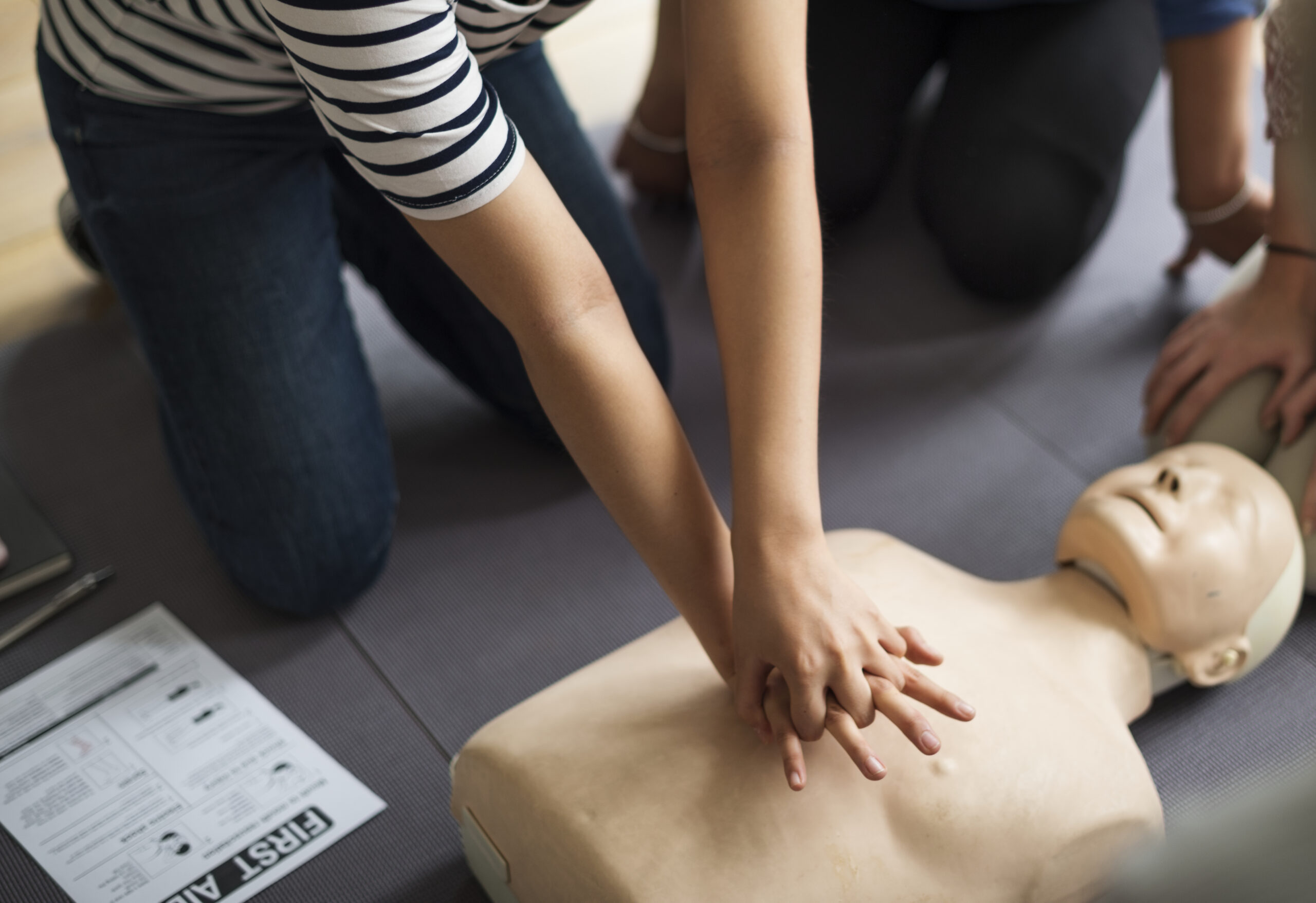
First aid is an essential skill, particularly in the workplace where accidents and emergencies can occur unexpectedly. Having trained first aiders on-site can significantly improve the response to accidents and medical incidents, ensuring that employees receive appropriate care until professional medical help arrives. In the UK, the First Aid at Work (FAW) qualification is a recognized standard that ensures individuals are well-equipped to handle emergencies in the workplace.
In this article, we will explore what the First Aid at Work qualification entails, its importance, who should consider obtaining it, and how it can benefit workplaces across the UK.
1. What is the First Aid at Work Qualification?
The First Aid at Work (FAW) qualification is a comprehensive course designed to equip individuals with the knowledge and skills required to administer first aid in a variety of workplace settings. The qualification is regulated by the Health and Safety Executive (HSE) and follows the legal requirements set out by the Health and Safety (First-Aid) Regulations 1981.
The course covers topics ranging from basic first aid skills to more advanced techniques such as dealing with heart attacks, strokes, and shock. Participants learn how to assess and manage different injuries, from minor cuts and burns to life-threatening emergencies.
2. Importance of First Aid Training in the Workplace
Accidents can happen in any workplace, and a prompt, efficient response can sometimes make the difference between life and death. Having trained first aiders on-site ensures that help is immediately available. Here are a few reasons why first aid training is crucial for businesses:
- Quick Response: Trained first aiders can respond immediately to accidents, reducing the risk of injuries becoming more severe.
- Legal Requirement: In the UK, employers must ensure adequate first aid provisions are in place, including having enough trained personnel.
- Boost Employee Confidence: Knowing that colleagues are trained in first aid helps employees feel more secure and safe at work.
- Compliance with Health and Safety Laws: Adequate first aid provisions ensure that businesses comply with legal regulations, avoiding potential penalties.
3. Legal Requirements for First Aid in the Workplace
In the UK, the Health and Safety (First-Aid) Regulations 1981 require all employers to provide adequate and appropriate first aid equipment, facilities, and trained personnel to ensure that employees can receive immediate help if they are injured or fall ill while at work. However, the specific requirements vary depending on the size, nature, and risks associated with the workplace.
The law doesn’t dictate a specific number of first aiders, but employers must conduct a risk assessment to determine the necessary first aid provisions. Factors to consider include the number of employees, the nature of the work, potential hazards, and the location of the workplace.

4. Who Should Consider Obtaining a First Aid at Work Qualification?
While it’s important for all businesses to have first aid provisions, certain roles and industries may require more individuals to be trained in first aid than others. Employees in high-risk environments such as construction sites, factories, or laboratories should have an adequate number of qualified first aiders.
Here are some roles and industries where the First Aid at Work qualification is especially relevant:
- Health and Safety Officers: Responsible for ensuring the safety of employees, these officers should be proficient in first aid.
- Construction and Manufacturing Workers: In industries with physical risks, such as construction or heavy machinery, first aid training is vital.
- Office Managers: In lower-risk settings like offices, having a few trained first aiders on-site is still essential to ensure compliance.
- Event Staff and Public Service Providers: For those working in public spaces, events, or customer-facing roles, first aid skills are critical to handle emergencies.
5. What Does the First Aid at Work Course Cover?
The First Aid at Work (FAW) course is typically a three-day training program covering a wide range of first aid topics. Here’s an overview of the core modules covered in the course:
- Introduction to First Aid: Understanding the importance of first aid and the role of a first aider.
- Assessing the Situation: Learning how to conduct a primary survey and assess the situation for dangers.
- Cardiopulmonary Resuscitation (CPR): How to perform CPR and use an automated external defibrillator (AED).
- Handling Unconscious Casualties: Techniques to manage and care for unconscious individuals.
- Managing Minor Injuries: First aid procedures for cuts, burns, sprains, and fractures.
- Dealing with Major Emergencies: How to respond to serious conditions like heart attacks, strokes, asthma attacks, and severe bleeding.
- Shock Management: Understanding shock, its symptoms, and how to provide first aid.
- Recording and Reporting Incidents: The legal aspects of reporting accidents in the workplace.
6. How to Obtain the First Aid at Work Qualification
To obtain the First Aid at Work qualification, individuals must complete a certified FAW training course. These courses are offered by a wide range of training providers across the UK, and they must adhere to the standards set by the HSE.
Here’s how the process works:
- Choose a Training Provider: Ensure the training provider is accredited by a recognized body, such as St John Ambulance, Red Cross, or an equivalent.
- Complete the Training Course: The course typically lasts for three days and includes both theoretical and practical assessments.
- Pass the Assessments: To qualify, participants must pass a series of assessments, including practical demonstrations and written exams.
- Receive the Certification: Upon passing the course, participants will receive a First Aid at Work certificate, valid for three years.
7. First Aid at Work Refresher Training
The First Aid at Work qualification is valid for three years. However, it’s recommended that individuals take an annual refresher course to keep their skills up to date. Once the three-year period expires, first aiders must complete a requalification course, typically a two-day program, to maintain their certification.
8. Benefits of First Aid at Work Certification for Employers
For employers, investing in First Aid at Work training offers several key benefits:
- Enhanced Safety Culture: First aid training fosters a safety-conscious workplace where employees are proactive about their well-being.
- Reduced Workplace Accidents: Trained first aiders are more likely to prevent minor injuries from escalating, leading to fewer work-related accidents.
- Improved Compliance: Businesses can ensure they meet the legal obligations set out by the HSE.
- Cost Savings: Timely first aid can reduce the severity of injuries, potentially saving businesses from compensation claims or lost productivity.
9. Conclusion
The First Aid at Work qualification plays a crucial role in creating safer and more responsible workplaces in the UK. By ensuring that employees are trained to handle medical emergencies, businesses not only comply with legal requirements but also contribute to a culture of safety and well-being.
Whether you are an employer looking to enhance your company’s first aid provisions or an individual keen to develop life-saving skills, obtaining the First Aid at Work qualification is a valuable investment for everyone involved.


Recent Comments